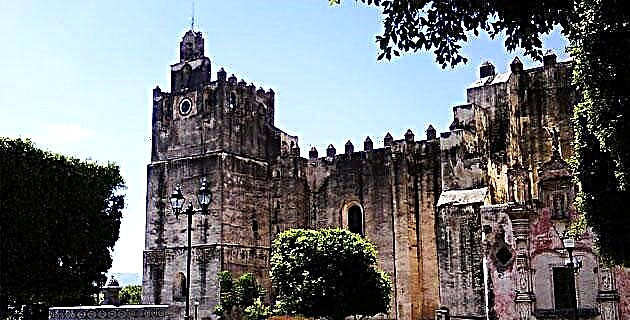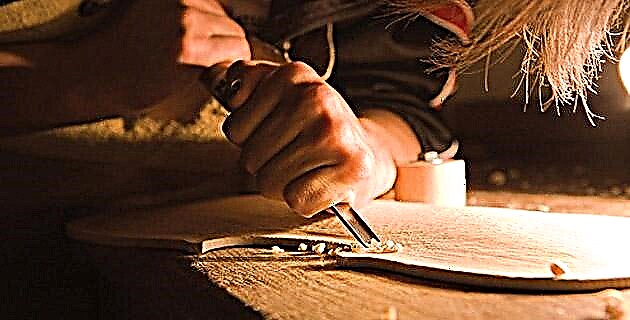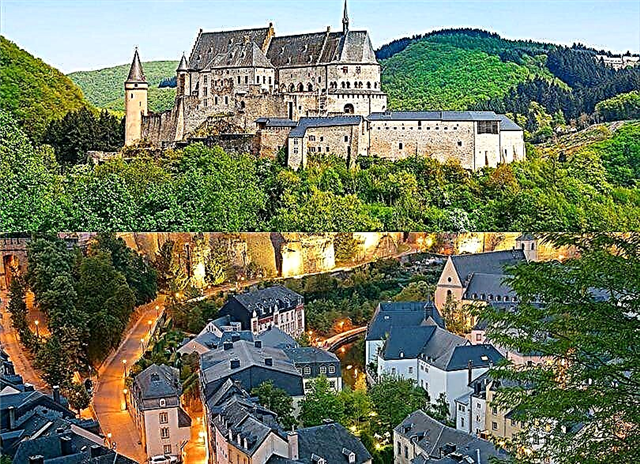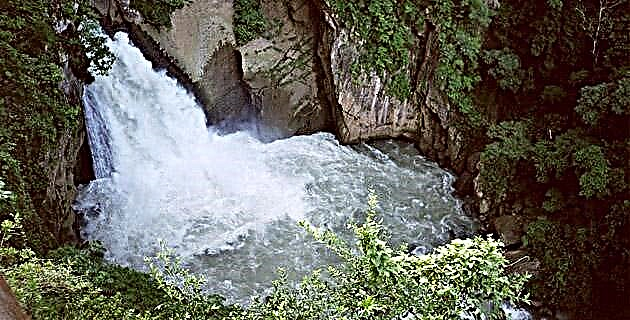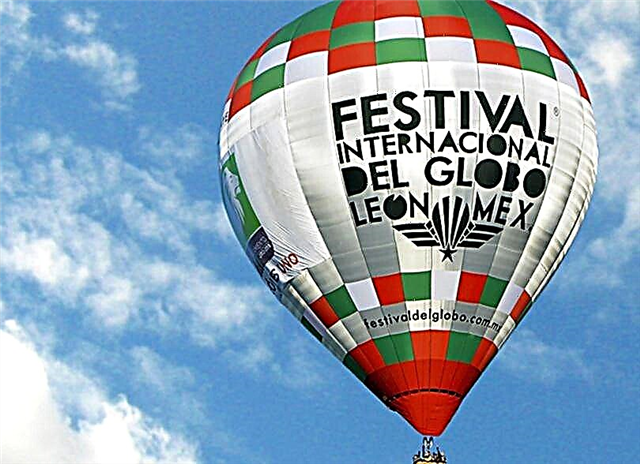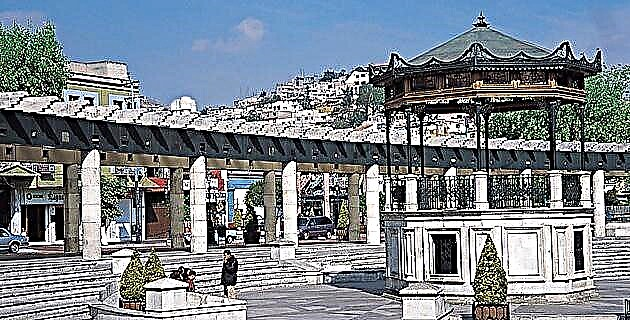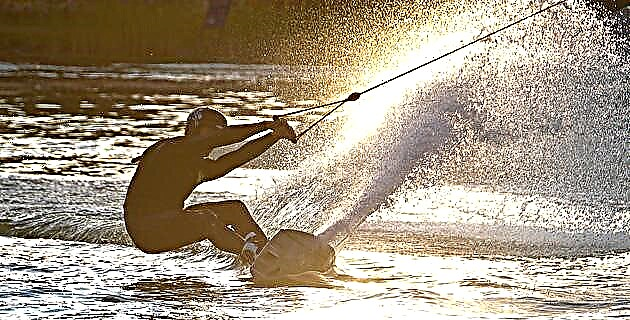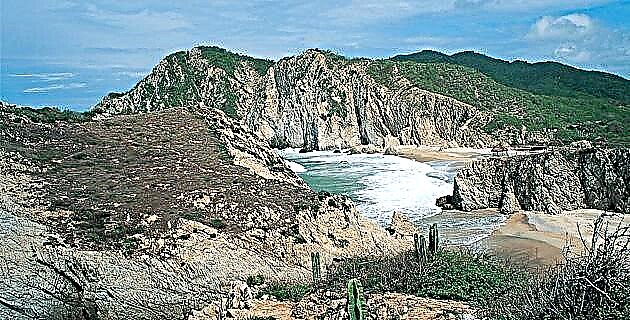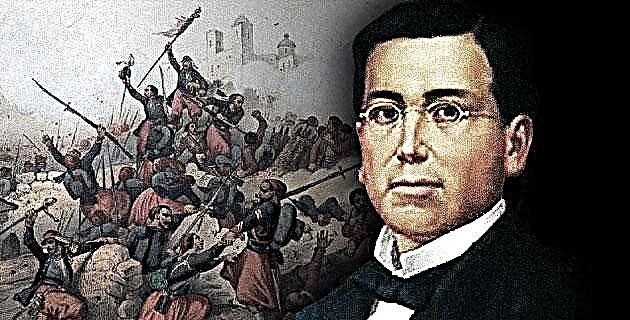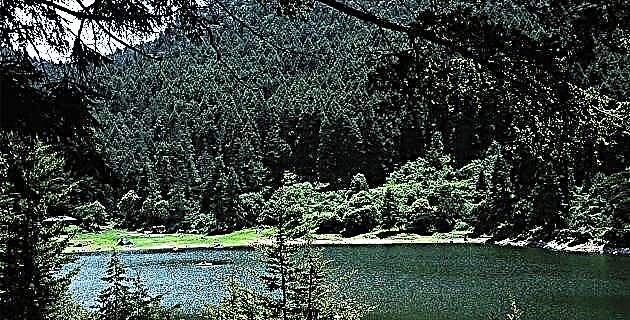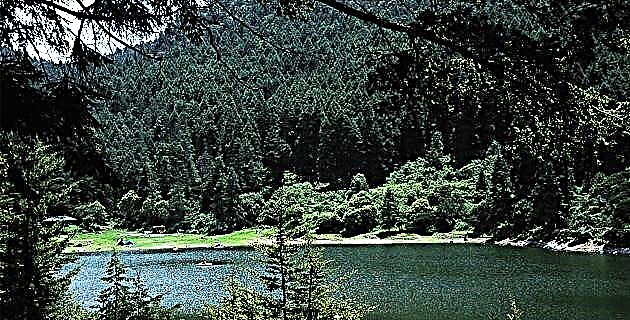
Leap after leap, tangled among the mosses grown on the fallen trunks, the Amajac River, like a restless child, rises in the mountains of the Actopan organs.
The morning mist caresses the forests of El Chico National Park. The land of Hidalgo dawns wet and cold. The plants let the dew slide down their leaves, while the soft murmur of the Bandola waterfall harmonizes with the songs of the birds, as in a master concert. Jump after jump, tangled among the mosses grown on the fallen trunks, the Amajac River, like a restless child, is born. The rocks, the crags, the porphyries admired by Humboldt and climbed by those of today, are witnesses.
With every kilometer that young Amajac advances, he is joined by his brothers. First, the one that comes from the south, from the Mineral del Monte, although sporadically, when it rains. It is from here that the Mesa de Atotonilco El Grande will be imposed to divert it to the west, towards the Valley of Santa María. Behind the river the bluish mass of the mountain range that divides Atotonilco El Grande from the Valley of Mexico: "A chain of porphyry mountains", as described by the tireless Alejandro de Humboldt, where limestone rocks and slaty sandstones have been superimposed on each other by the creative force of nature, considering them both more remarkable and identical to those seen in the old continent that saw him born.
Three kilometers northwest of Atotonilco El Grande, Hidalgo, on the road to Tampico, you will find a crossroads with a gravel road, to the left. In this place it will cross the last cultivated flat parts of the plateau and will then enter a steep slope, at the bottom of which, before the magnificent amphitheater of the porphyry mountains, or of the Sierra de El Chico, between green hills, the place name means in Nahuatl "Where the water is divided": Santa María Amajac. Before finishing your walk, you will be able to visit the famous Atotonilco Baths, named after Humboldt, currently a spa located at the foot of the Bondotas hill, whose thermal waters flow at 55ºC, being radioactive with a high content of sulfates, potassium chloride, calcium and bicarbonate.
THE EMBEDDED PLATEAU
Thirteen kilometers after leaving Atotonilco, it appears on the north bank of the river, Santa María Amajac, at 1,700 meters above sea level. Simple, quiet town, with an old church supported by buttresses and on its walls the battlements typical of the 16th century. In its atrium, a cemetery with tombs that resemble scale models of temples of different architectural styles.
The path continues towards the first mouth of the Amajac ravine, heading for Mesa Doña Ana, a 10 km rough route between stone and gravel. It won't be long after you left Santa Maria behind, when the ground shows the marks of erosion. The rocks will appear naked in the rays of the sun, torn apart, eaten away, smashed. If you are a collector of rocks, if you like to observe their texture, shine and color, in this place you will find enough to entertain yourself. If you continue, you will see how the road turns around the Fresno hill and you will enter the north side of the first great mouth of the ravine. Here the depth, counted from the top of the hill to the riverbed, is 500 meters.
On a plateau that penetrates the gorge, forcing the Amajac to make a kind of half return or "U" turn, sits Mesa Doña Ana, at 1,960 meters above sea level, known because these lands belonged many years ago to a woman named Dona Ana Renteria, one of the great owners of estates from the early seventeenth century. On September 15, 1627, Doña Ana bought more than 25 thousand hectares of the San Nicolás Amajac farm, today known as San José Zoquital; Later, she added to her property about 9,000 hectares inherited by her late husband, Miguel Sánchez Caballero.
It is probable that her admiration when contemplating the panorama from the edge of the plateau, if she ever visited the town that today honors her with her name, is the same that you will feel. All you have to do is leave your car in the hamlet and cross a one-kilometer path on foot, which is the width of the plateau.
He will come out of the cornfields and then he will think: "I left a ravine behind which we were skirting along the way, but this one that now appears before me, what is it?" If you ask a local, they will tell you: "Well, it's the same one." The river surrounds the plateau, as we said, in a "U"; But here, from the top of La Ventana hill, guardian that closes the table from the north, to the bottom, where the Amajac river runs, they are already 900 m deep and there in front, like an imposing stone colossus of Rodas, the Rock de la Cruz del Petate narrows the pass, leaving only three kilometers between both natural monuments.
The guide who leads you to this place will take your gaze to the other side of the ravine and will probably comment: "There is the Bridge of God, to the south." But donkeys will not be necessary for loading or anything like that. You will pass to the other side sitting in the comfort of your car. You will only need time, patience and, above all, curiosity.
Return to Santa María Amajac, go through the spa again and immediately, going up, the road forks and you will take the direction towards the Sanctorum farmhouse. Wading the Amajac River and seeing the weeping willows on its banks is really nice to take a break and eat something while protecting yourself from the rays of the midday sun under their shadows. Here the heat can bother a bit in spring, as the river runs at this point at 1 720 meters above sea level. It is difficult to go through the ford in the middle of the rainy season, when the Amajac has its full course.
THE BRIDGE OF GOD
A few kilometers later you will enjoy beautiful panoramic views of the Santa María valley, since the path will ascend the slopes of a hill that, due to the particularities of its rocks, is seen in purple, then yellowish, reddish, in short, a recreation visual.
Passing Sanctorum, eight kilometers after crossing the Amajac River, the road finally looms into the canyon gorge. And there in front you will be able to see the traces left between the hills, like a snake, of the other road by which they returned from Mesa Doña Ana. Going around in zigzag, now it will surround a mountain ridge that is detached from the mountains of El Chico and, when looking out on the other side, a new ravine perpendicular to that of the Amajac will appear. You will have no alternative, the landscape will captivate you. The car will listen to the hypnotism of the road and go straight into the abyss. And it is that I could not find a better way of communication to cross a secondary ravine like this one, where the San Andrés stream runs. At the bottom will appear a kind of, say, plug. An embedded hill that makes the most of the path to pass over it and thus return to the opposite side of the gorge towards the nearby town of Actopan, 20 km away. Leave your car there and descend on foot until you reach the stream. You will be surprised to observe that the plug is nothing less than a natural rock bridge, under which, through a cavern, the stream crosses.
Legend has it that one time a priest promised the Lord to separate himself from man and went to the area of the natural bridge to live as a hermit. There, among the forest, he fed on fruits and vegetables and the occasional animal that he managed to catch. One day he heard with surprise that someone was calling him and then he saw a beautiful woman near the entrance of the cave that he inhabited. When he tried to help her, thinking that it was someone lost in the forest, he observed with astonishment the devil who was mocking him in the undergrowth. Frightened and thinking that the evil one was chasing him, he ran desperately, when suddenly he found himself standing on the edge of a black abyss, the ravine of the San Andrés stream. He begged and implored the Lord for help. The mountains then began to extend their arms until they formed a stone bridge over which the frightened religious man passed, continuing on his way without being known more about him. From that moment, the place is known by the locals as Puente de Dios. Humboldt called it “Cueva de Danto”, “Montaña Horadada” and “Puente de la Madre de Dios”, as referred to in his Political Essay on the Kingdom of New Spain.
HEADING TO THE PÁNUCO
Practically at the junction of the Amajac and San Andrés rivers, and around the Mesa de Doña Ana, is where the ravine begins its sharp and cutting penetration in the Sierra Madre Oriental. From now on the river will no longer run through valleys like that of Santa María. The adjacent hills that are increasingly larger and higher will block the way and then it will look for mouths and gorges through which to drain its flow. It will receive as tributaries the azure waters from the Tolantongo ravine and cavern, then those of the older brother, Venados, whose content comes from the Metztitlán lagoon. It will host dozens, hundreds, thousands more tributaries, countless descendants of the large number of humid and misty gorges of the Huasteca Hidalgo.
The Amajac River will come face to face with a mountainous peak after receiving the waters of the Acuatitla. The so-called Cerro del Águila stands in his way and forces him to divert his course to the northwest. The mountain emerges more than 1,900 m above the river, which at that point slides at only 700 m of altitude. Here we have the deepest place in the ravine that the Amajac will travel along 207 km before entering the plain of the Huasteca potosina. The average slope of the slopes is 56 percent, or about 30 degrees. The distance between opposite peaks on both sides of the ravine is nine kilometers. In Tamazunchale, San Luis Potosí, the Amajac will join the Moctezuma River and the latter, in turn, the mighty Pánuco.
Before reaching the town of Chapulhuacán, you will think you are standing on a gigantic camel, passing from one side to the other between its humps. For a few moments you will have before your eyes, if the mist allows it, the ravine of the Moctezuma River, one of the deepest in the country, and immediately, so that your astonishment does not find a pause, as if it were a game to make the legs of those who fear heights tremble, they will be skirting the abyss of the Amajac and its meandering river like a thin silk cloth at the bottom. Both ravines, magnificent cliffs that split the mountain range, run parallel until they reach the plain, the sigh, the rest.

